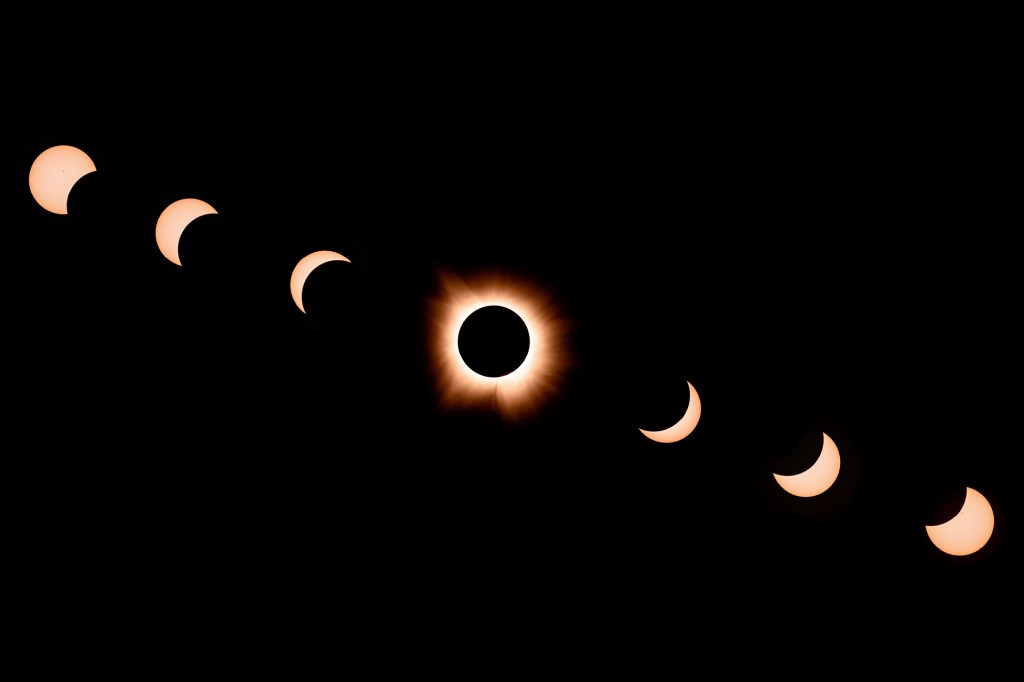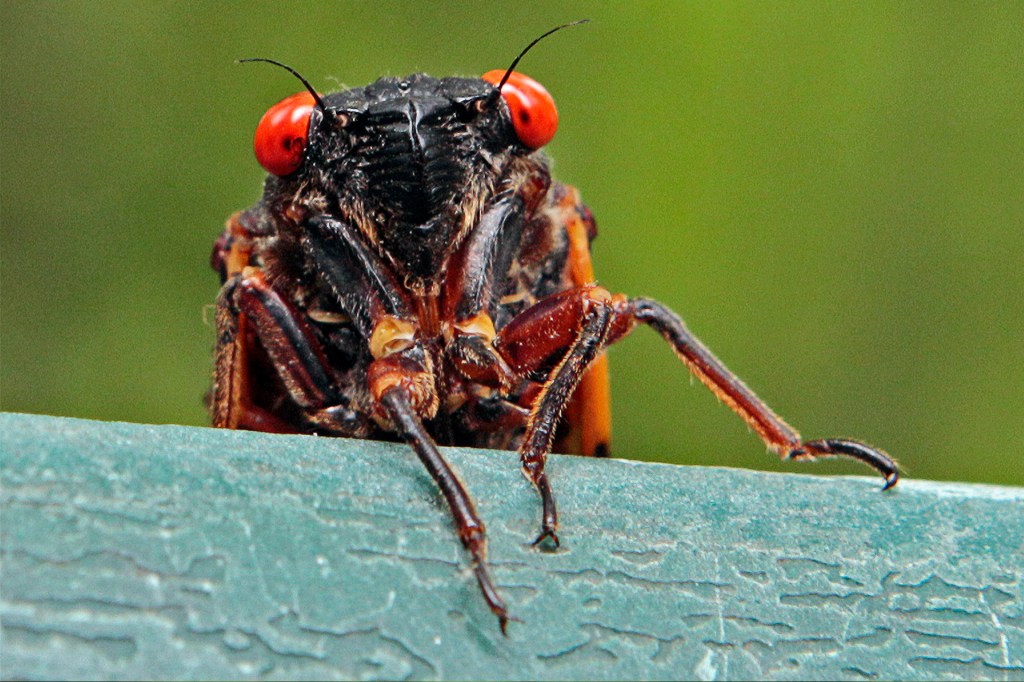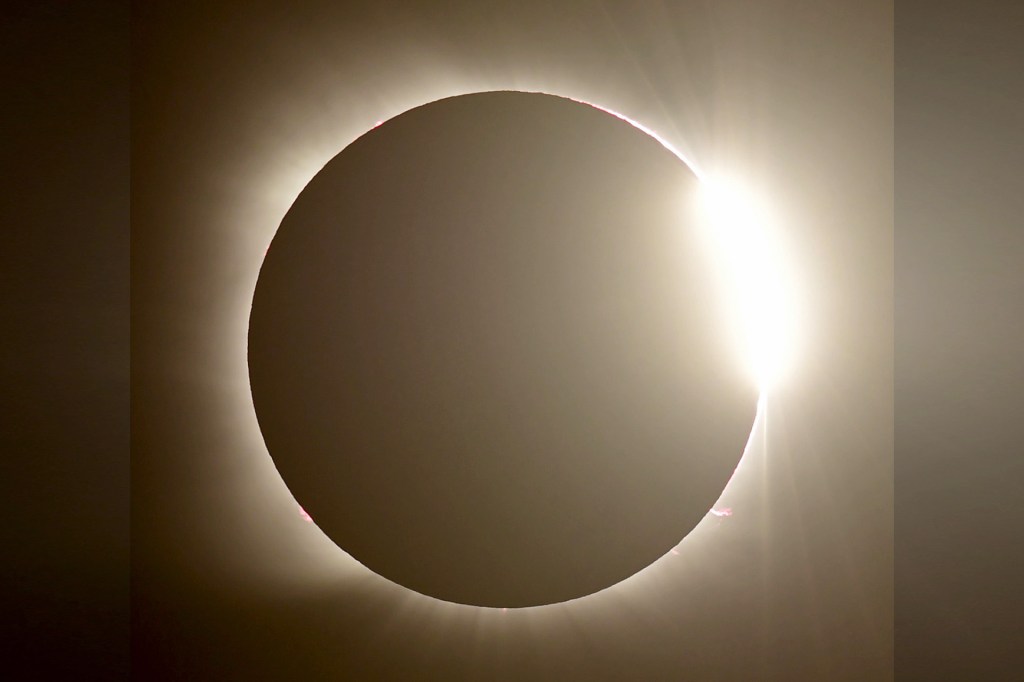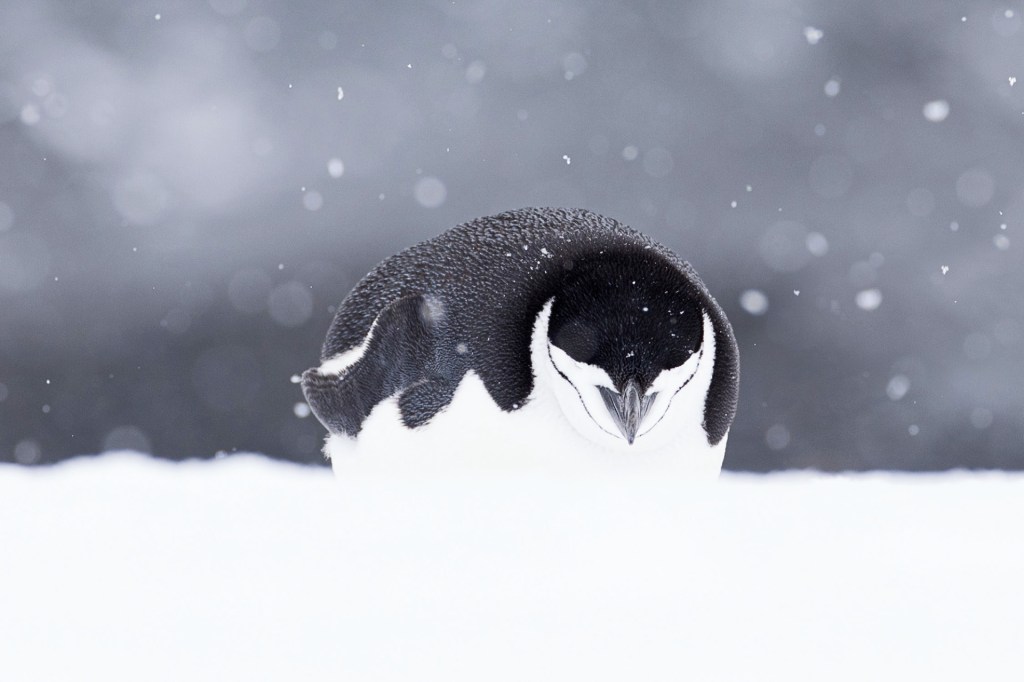
How do you sleep? Maybe you cuddle up with a favorite blanket. You probably go to sleep in the evening and wake up hours later, when it’s morning. That’s how most people sleep.
Animals sleep, too. But not all animals sleep the same way. Some spend much more time asleep than we do. Some spend much less. Some animals sleep while they’re standing up or moving.
A study published in November in the journal Science found that chinstrap penguins have one of the most unusual sleep styles in the animal kingdom. Instead of one long stretch of sleep, the penguins take thousands of micro-naps every day. Each is only a few seconds long. That means a penguin’s nap lasts only as long as the time it took you to read this sentence.
Penguin Protection
King George Island is about 75 miles off the coast of Antarctica. In 2019, French scientist Paul-Antoine Libourel visited the island to research the way chinstrap penguins sleep.
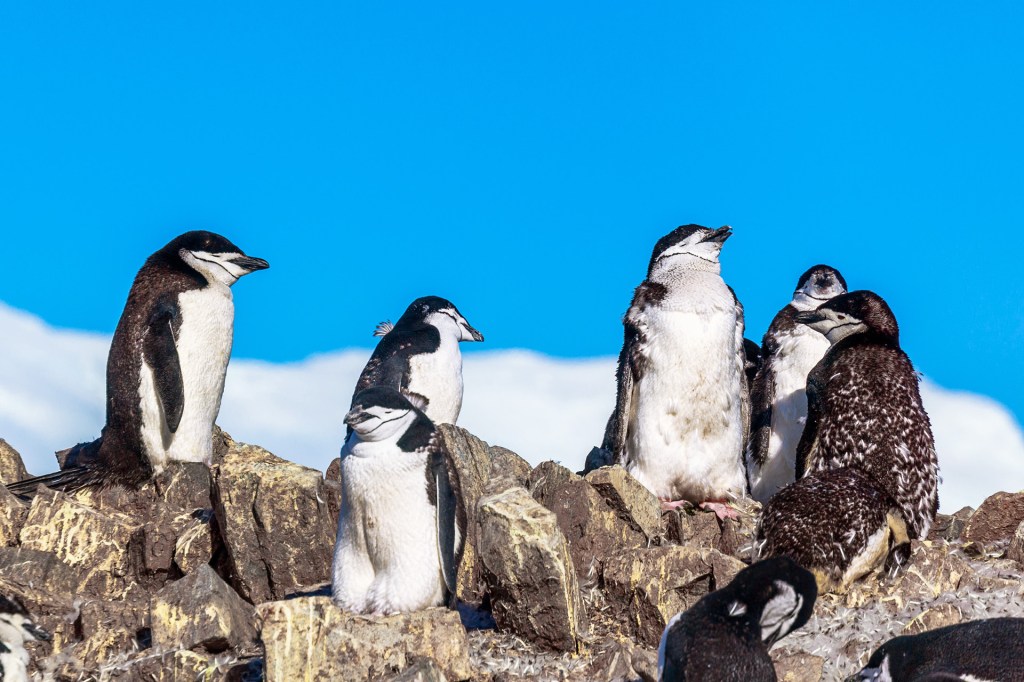
BREEDING GROUND Chinstrap penguins live in Antarctica. Some travel north to King George Island to breed.
VADIM NEFEDOV—GETTY IMAGESEach November, many chinstraps gather on King George Island to breed. The male birds use stones to build nests. The females lay eggs in the nests. For the next several weeks, the parents take turns protecting the nest and heading out to sea to hunt for fish.
Libourel and his team wanted to learn how the adult penguins sleep in such intense conditions. “The animals have to protect their eggs, but they also have to sleep,” he told TIME for Kids. “So the question is, ‘How do they sleep when they are facing such a big challenge?’”
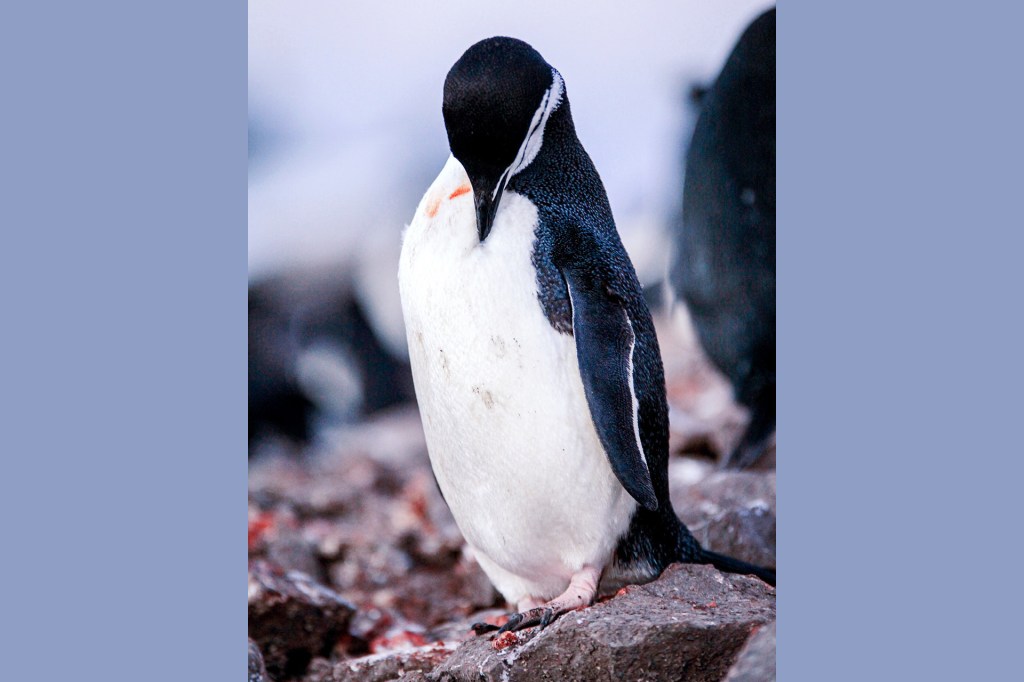
STANDING GUARD To protect their eggs from predators, chinstrap penguins must stay alert.
SIMONKR—GETTY IMAGESLibourel’s team fitted 14 penguins with devices to track their brain activity for about 11 days. That way, the researchers could see when the birds were sleeping and when they were awake.
What the scientists found was surprising: The penguins took up to 10,000 tiny naps every day. Each nap lasted four seconds, on average. But together, the naps added up to more than 11 hours of sleep each day. The scientists think that by sleeping in such short bursts, the penguins are able to keep watch for predators predator an animal that kills and eats other animals to survive (noun) Other animals scatter when a predator, such as a lion, arrives. .
New Way To Learn
Humans and other animals sometimes nod off to sleep for just few seconds. But this only happens occasionally. Scientists were surprised to find that chinstrap penguins could spend so much time in this drowsy drowsy sleepy (adjective) The puppy was still drowsy after a long afternoon nap. state.
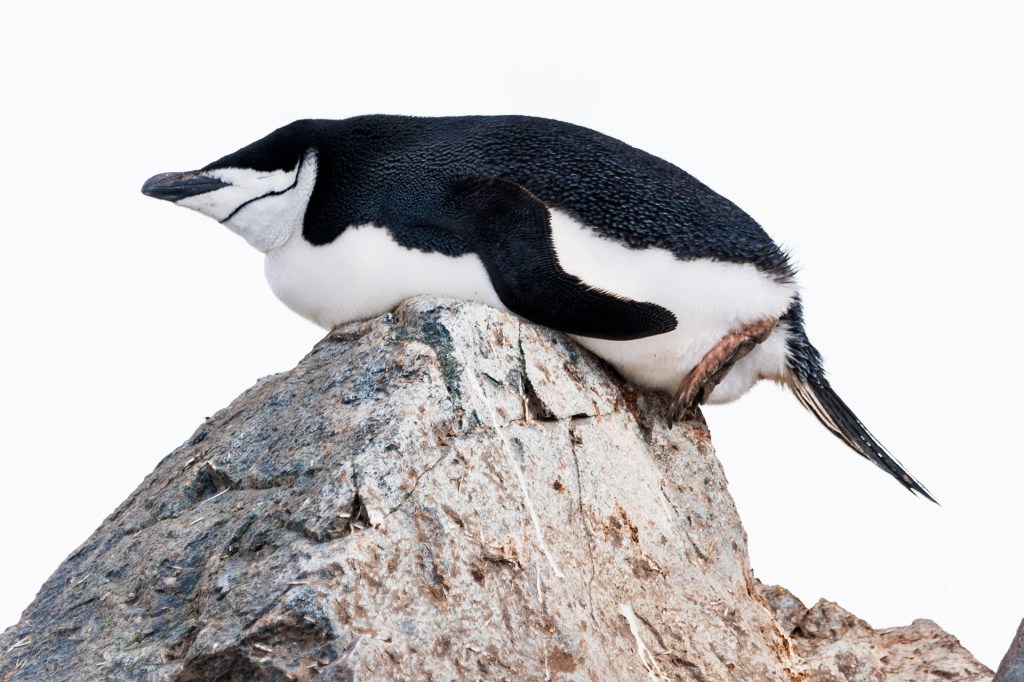
BALANCING ACT Chinstrap penguins balance taking time to rest with staying alert to protect their nests.
JOSÉ GIESKES FOTOGRAFI/GETTY IMAGESThe study’s findings highlight the importance of studying how wild animals sleep. Vladyslav Vyazovskiy studies sleep at the University of Oxford, in England. He says that until recently, scientists mainly studied sleep in a lab. But with new technology, like the trackers used on the penguins, it’s possible to learn how animals sleep in their natural habitats.
“Going out there in the world, where animals have to balance their need to sleep with other challenges—that is very important,” Vyazovskiy told TIME For Kids. “That can help us try to understand: ‘What is sleep really about?’"
How Do They Sleep?
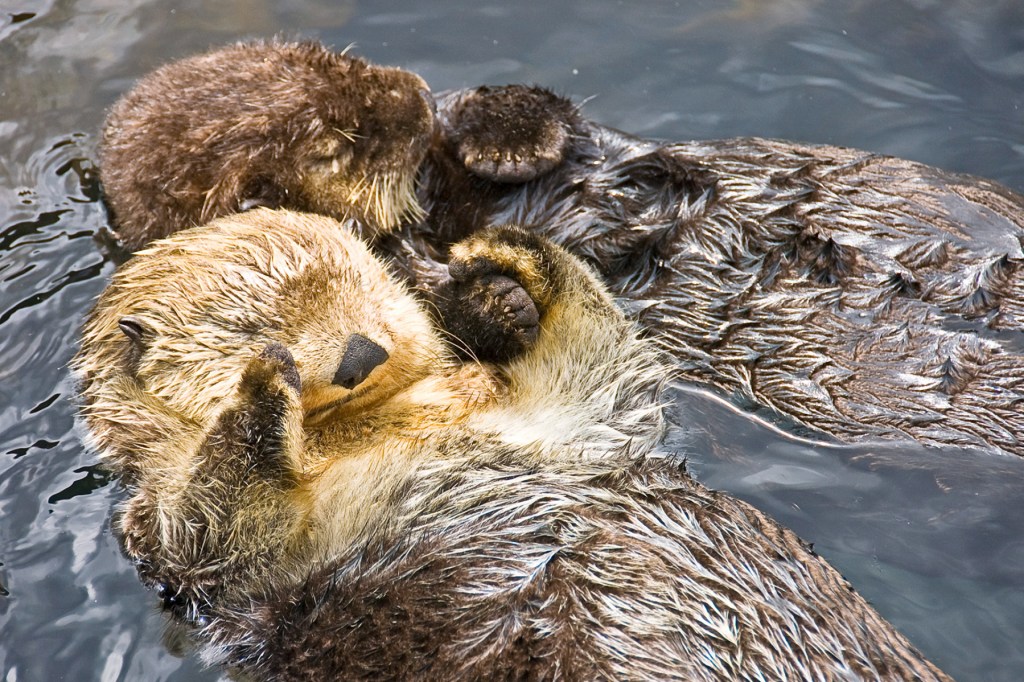
Chinstrap penguins aren’t the only animals with notable sleep styles. Bottlenose dolphins shut down one side of the brain when they sleep. The other side stays awake to watch for predators. African elephants sleep less than any other mammal. They rest for only two hours each day, mainly at night. And otters (left) hold hands while sleeping, sometimes even in large groups, so they don’t float away from one another while they snooze.




